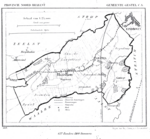Evoluon

The Evoluon is a conference centre and former science museum erected by the electronics and electrical company Philips at Eindhoven in the Netherlands in 1966. Since its construction, it has become a landmark and a symbol for the city. The building is unique due to its very futuristic design, resembling a landed flying saucer. It was designed by architects Leo de Bever and Louis Christiaan Kalff, while the exhibition it housed was conceived by James Gardner. De Bever and Kalff only got two demands for the design of the building, it had to be "spectacular" and it had to be possible to hold exhibitions in the building.Its concrete dome is 77 metres (253 ft) in diameter and is held in place by 169 kilometres (105 mi) of reinforcing steel bars. In the 1960s and 1970s the Evoluon attracted large visitor numbers, since its interactive exhibitions were a new and unique concept in the Netherlands at that time. But when competing science museums opened in other cities, the number of visitors began to decline. After several years of losing money, the original museum closed down in 1989 and the Evoluon was converted into a conference centre, opening in 1998. In the UK the Evoluon is chiefly remembered from Bert Haanstra's wordless short film entitled simply Evoluon, commissioned by Philips to publicise the museum, and shown as a trade test colour film on BBC television from 1968 to 1972. In October 2013 the Evoluon was used to stage four 3D-concerts by the German electronic band Kraftwerk, each before an audience of 1,200 spectators. Key band member Ralf Hütter handpicked the venue for its retro-futuristic look. Bespoke 3D-visuals of the saucer section of the building descending from space were used in the live rendition of their track Spacelab.
Excerpt from the Wikipedia article Evoluon (License: CC BY-SA 3.0, Authors, Images).Evoluon
Noord Brabantlaan, Eindhoven Strijp
Geographical coordinates (GPS) Address Website External links Nearby Places Show on map
Geographical coordinates (GPS)
| Latitude | Longitude |
|---|---|
| N 51.443611111111 ° | E 5.4469444444444 ° |
Address
Evoluon
Noord Brabantlaan
5651 LZ Eindhoven, Strijp
North Brabant, Netherlands
Open on Google Maps








